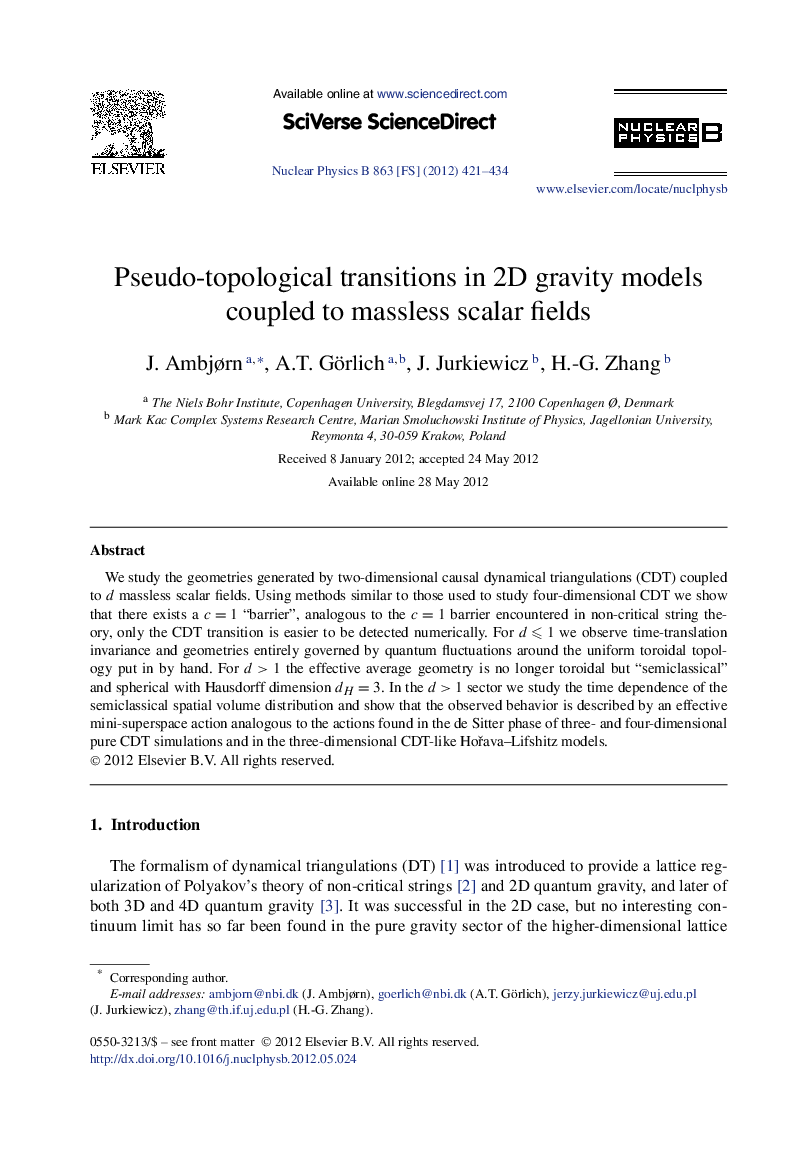| Article ID | Journal | Published Year | Pages | File Type |
|---|---|---|---|---|
| 1840940 | Nuclear Physics B | 2012 | 14 Pages |
We study the geometries generated by two-dimensional causal dynamical triangulations (CDT) coupled to d massless scalar fields. Using methods similar to those used to study four-dimensional CDT we show that there exists a c=1c=1 “barrier”, analogous to the c=1c=1 barrier encountered in non-critical string theory, only the CDT transition is easier to be detected numerically. For d⩽1d⩽1 we observe time-translation invariance and geometries entirely governed by quantum fluctuations around the uniform toroidal topology put in by hand. For d>1d>1 the effective average geometry is no longer toroidal but “semiclassical” and spherical with Hausdorff dimension dH=3dH=3. In the d>1d>1 sector we study the time dependence of the semiclassical spatial volume distribution and show that the observed behavior is described by an effective mini-superspace action analogous to the actions found in the de Sitter phase of three- and four-dimensional pure CDT simulations and in the three-dimensional CDT-like Hořava–Lifshitz models.
